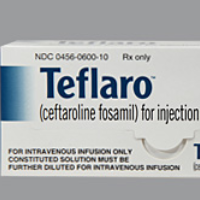“Near Absence” of Antibiotics to Combat Deadly New Bacterial Strains

New forms of bacteria are posing nightmarish threats to human health due to the serious lack of antibiotics to combat them.
The Infectious Disease Society of America (IDSA) warned several years ago that cases of infections unresponsive to existing antibiotic drugs were going up, while at the same time the number of medications being developed to treat this problem was low.
Little has changed since then, only now there is a “near absence” of antibiotic candidate drugs capable of combating new strains of bacteria, the IDSA said in a new report (pdf).
The new strains have been called “nightmare bacteria,” due to their resistance to treatments currently available, and that they often result in death. Furthermore, the strains are able to spread their genetic materials to other bacteria, thereby making them resistant to medications as well.
The Centers for Disease Control and Prevention warned in March that there was a fourfold increase in the number of hospitals reporting common Enterobacteriaceae infections that couldn’t be treated with many types of antibiotics. As many as half of the patients infected with Enterobacteriaceae died as a result.
Only two new drugs have come on the market in the last four years since IDSA issued its warning. Those are televancin (marketed as Vibativ) and ceftaroline fosamil (Teflaro). Only Teflaro is capable of combating the new “nightmare” bacteria in its treatment of skin infections and pneumonia.
The slow pace of new antibiotic development by biotech and pharmaceutical firms is primarily due to its lack of financial profitability, a problem that IDSA believes must be addressed by federal government support.
-Noel Brinkerhoff
To Learn More:
Sparse Crop of New Antibiotics Confronts 'Nightmare Bacteria' (by Melissa Healy, Los Angeles Times)
The 10 x '20 Initiative: Pursuing a Global Commitment to Develop 10 New Antibacterial Drugs by 2020 (Infectious Diseases Society of America) (pdf)
Vital Signs: Carbapenem-Resistant Enterobacteriaceae (by Jesse T. Jacob, MD, Eili Klein, PhD, Ramanan Laxminarayan, PhD, Zintars Beldavs, MS, Ruth Lynfield, MD, Alexander J. Kallen, MD, Philip Ricks, PhD, Jonathan Edwards, MStat, Arjun Srinivasan, MD, Scott Fridkin, MD, J. Kamile Rasheed, PhD, David Lonsway, MMedSc, Sandie Bulens, MPH, Rosa Herrera, L. Clifford McDonald, MD, Jean Patel, PhD, Brandi Limbago, PhD, Michael Bell, MD, Denise Cardo, MD, Alexander J. Kallen; Centers for Disease Control and Prevention)
FDA Quietly Ends Attempt to Regulate Antibiotics in Animal Feed (by Noel Brinkerhoff, AllGov)
80% of U.S. Antibiotics Go to Farm Animals (by Noel Brinkerhoff, AllGov)
- Top Stories
- Unusual News
- Where is the Money Going?
- Controversies
- U.S. and the World
- Appointments and Resignations
- Latest News
- Trump to Stop Deportations If…
- Trump Denounces World Series
- What If China Invaded the United States?
- Donald Trump Has a Mental Health Problem and It Has a Name
- Trump Goes on Renaming Frenzy






Comments